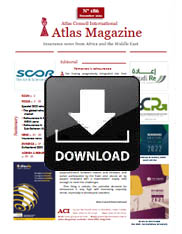Tomorrow’s reinsurance
 Click to download Click to download the magazine |
This need for solidarity expressed by policyholders and governments follows the historic Covid-19 crisis that has given rise to an outstanding loss straining all sectors of the world economy, combining hazards and politics, life and non-life classes of business, direct and indirect losses.
In fact, the health crisis has taken the industry by surprise, as the latter must also deal with cyber risks, global warming and the risks pertaining to the disruption of the supply chain.
Reinsurers must therefore deal with risks that are increasingly unpredictable, heavy, frequent and, above all, more devastating on a global scale. These risks are just the opposite of the current insurance business model based on the law of large numbers, claims experience and modeling.
To satisfy their clients, reinsurers as well as insurers, are required to adapt to the real economy. Their goal is not to refuse risks but to progressively fill the gap between insurable and uninsurable risks without destroying mutuality.
The coverage of extreme risks by reinsurers necessarily requires consolidation of the market, a rapprochement between insurers and reinsurers and active participation by the State and, above all, by players endowed with a shareholders’ equity solid enough to meet the challenges.
One thing is certain, the potential demand for reinsurance is very high with increasing capacity needs, especially in developed countries.